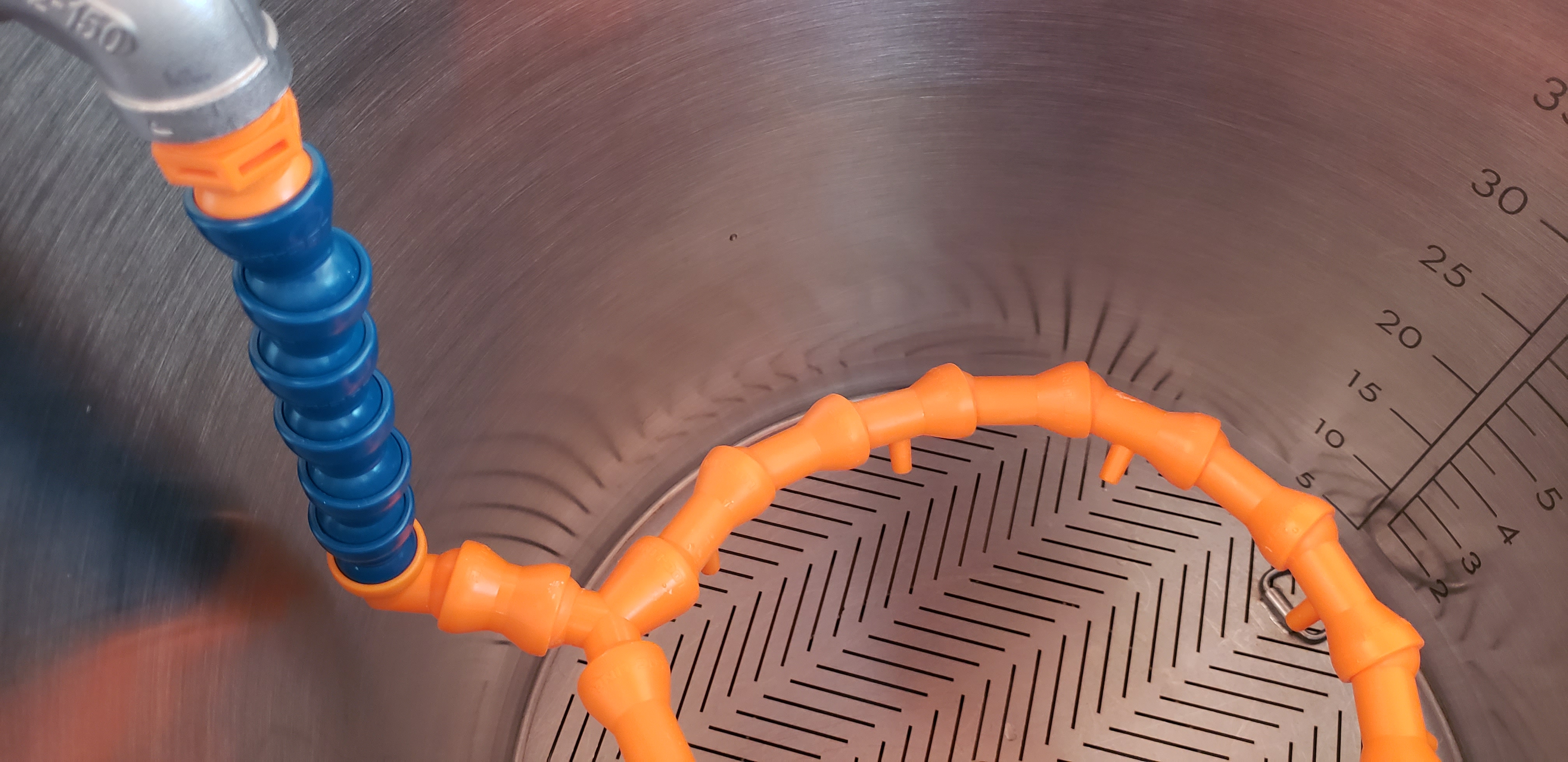I've switched over to eHERMS in 15 gallon pots. Ive got a slotted false bottom in my MT and the blichman autosparge. My current process is to underlet into the MT, stir once, begin the recirculation once I transfer the sparge liquor from the BK to the HLT, wait for the temps to stabilize at mash temp and then start my timer. I flow the wort slower than the videos from Kal and theelectricbrewery during the recirc but otherwise follow those steps. I transfer to the BK at a rate of 1 quart per minute.
I've consistently been getting efficiencies in the high 60's with hydrometer and refractometer. I've tried stirring a lot, stirring a little, and not stirring. I've used rice hulls, I've tried speeding up the recirculation and slowing it down. I usually mash for 45 minutes then increase to 165 over 15 minutes. It usually takes 20 to increase to 165 and I don't start the clock until I hit my mash temp so the total mash is probably longer.
On my old igloo cooler set up I would get mash efficiencies in the low 90's every time. It made it really easy to create recipes. One time on this system I got a mash efficiency in the 80s--it seems to happen on my German pilsner which has a lower SG. Is the reduced efficiency an effect of doing larger mashes? For instance, in my most recent beer the grist was:
21.75 lbs Maris Otter
1.75 White Wheat
.75 C40
1 LB Dextrose
I got a SG of 1055 13.5 gallon pre-boil wort and a mash efficiency of 73%. (total BH efficiency was 68%). In the videos Kal posts and on his website he's getting in the 90s IIRC.
One thing I want to do that I'm wondering if it will make a difference is to create a sparge arm so the mash is being recirculated evenly over the top of the grain bed. I wonder of the recirculating just through the 5/8 hose is causing channeling, then when I sparge the channeling continues. I have never noticed any dough balls when I empty the MT.
Any thoughts are appreciated!
I've consistently been getting efficiencies in the high 60's with hydrometer and refractometer. I've tried stirring a lot, stirring a little, and not stirring. I've used rice hulls, I've tried speeding up the recirculation and slowing it down. I usually mash for 45 minutes then increase to 165 over 15 minutes. It usually takes 20 to increase to 165 and I don't start the clock until I hit my mash temp so the total mash is probably longer.
On my old igloo cooler set up I would get mash efficiencies in the low 90's every time. It made it really easy to create recipes. One time on this system I got a mash efficiency in the 80s--it seems to happen on my German pilsner which has a lower SG. Is the reduced efficiency an effect of doing larger mashes? For instance, in my most recent beer the grist was:
21.75 lbs Maris Otter
1.75 White Wheat
.75 C40
1 LB Dextrose
I got a SG of 1055 13.5 gallon pre-boil wort and a mash efficiency of 73%. (total BH efficiency was 68%). In the videos Kal posts and on his website he's getting in the 90s IIRC.
One thing I want to do that I'm wondering if it will make a difference is to create a sparge arm so the mash is being recirculated evenly over the top of the grain bed. I wonder of the recirculating just through the 5/8 hose is causing channeling, then when I sparge the channeling continues. I have never noticed any dough balls when I empty the MT.
Any thoughts are appreciated!











































![Craft A Brew - Safale S-04 Dry Yeast - Fermentis - English Ale Dry Yeast - For English and American Ales and Hard Apple Ciders - Ingredients for Home Brewing - Beer Making Supplies - [1 Pack]](https://m.media-amazon.com/images/I/41fVGNh6JfL._SL500_.jpg)
















